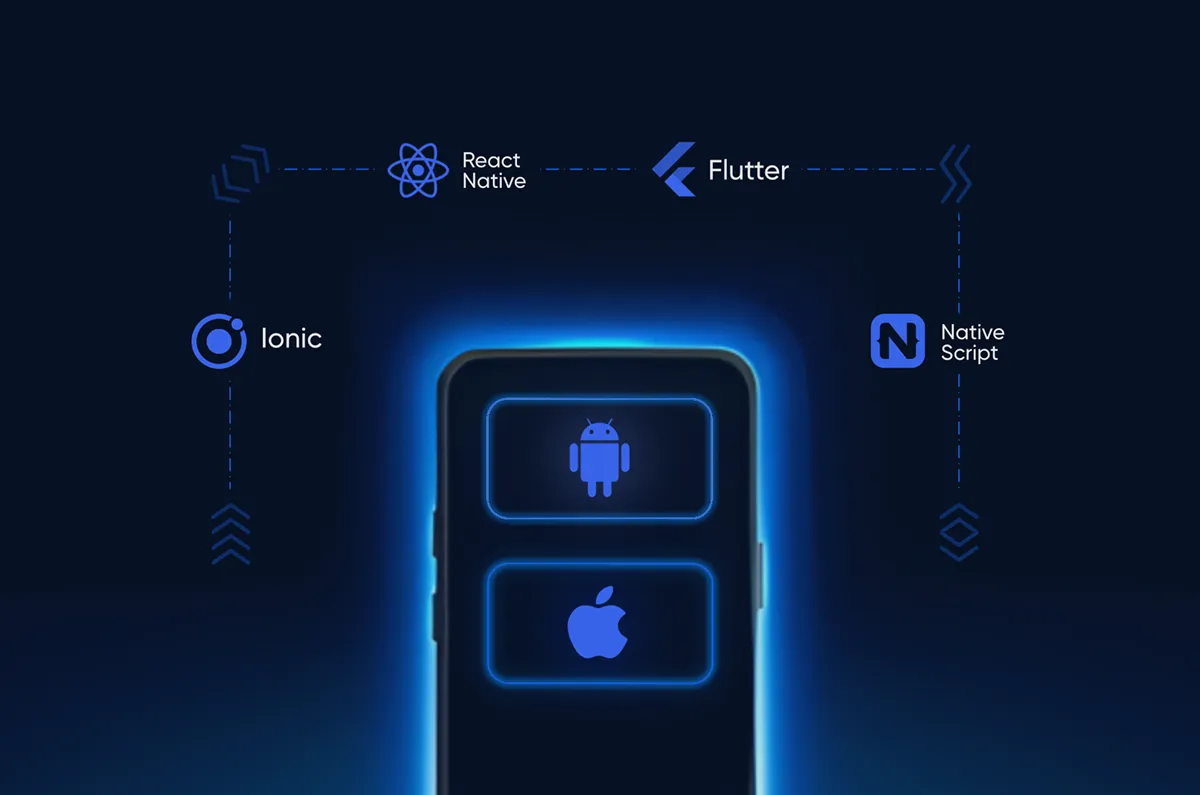
Why let multiple native apps drain your resources? Discover how cross-platform development helps you launch faster, cut costs, and maintain consistency across devices with one codebase.
In today’s fast-paced digital world, businesses must balance delivering outstanding user experiences with maintaining efficiency and scalability. One of the key decisions in app development is choosing the right approach.
Cross-platform app development has become increasingly popular because it simplifies development, cuts costs, and allows businesses to reach a wider audience. Cross-Platform App Development Framework Market is projected to grow from USD 15.67 Billion in 2025 to USD 42.60 Billion by 2034, exhibiting a compound annual growth rate (CAGR) of 11.75% during the forecast period (2025 - 2034).
In this blog, we’ll break down the fundamentals of cross-platform app development, explore the technologies behind it, highlight its benefits, and discuss what the future holds. By the end, you’ll have the insights needed to make the best choice for your business app.
What is a Cross-Platform App?
In this blog, we’ll break down the fundamentals of cross-platform app development, explore the technologies behind it, highlight its benefits, and discuss what the future holds. By the end, you’ll have the insights needed to make the best choice for your business app.
What are the popular technologies that are used in Cross-Platform Mobile Development?
Several advanced technologies and frameworks power cross-platform app development.The most popular technologies include React Native and Flutter.
- React Native: React Native is an open-source UI software framework developed by Meta Platforms. It is used to develop applications for Android, Android TV, iOS and macOS by enabling developers to use the React framework along with native platform capabilities. Approximately 32% of developers use React Native for developing mobile applications which indicating its significant presence in the market.
- Flutter: Flutter is an open-source UI software development kit created by Google. It can be used to develop cross-platform app from a single codebase for the web, Android, iOS, Linux, macOS, and Windows. As of today nearly 46% of developers worldwide rely on Flutter to build applications, making it the leading cross-platform framework.
Comparison of Cross-Platform App Development vs. Native Development?
To understand the benefits of cross-platform app development, it’s important to compare it with native development:
Advantages & Disadvantages of Cross-Platform App Development?
Advantages of Cross-Platform App Development
- Cost Efficiency: Developing a single codebase for multiple platforms significantly reduces development and maintenance costs.Cross-platform app development can reduce costs by 30% to 40% compared to native app development.
- Faster Time to Market: With shared development efforts, businesses can launch their apps quicker, gaining a competitive edge.
- Wider Audience Reach: By supporting multiple platforms, businesses can reach a larger audience, including both Android and iOS users.
- Consistency: A single codebase ensures uniformity in design and functionality across platforms.
- Ease of Maintenance: Updates and bug fixes need to be implemented only once, simplifying maintenance.
- Rich Libraries and Tools: Frameworks like Flutter and React Native offer pre-built components and libraries to speed up development.
Disadvantages of Cross-Platform App Development
- Performance Gaps: For apps requiring high-performance features (like heavy graphics or real-time data processing), native development might still be the better choice.
- Limited Access to Platform-Specific Features: Some frameworks may not support every feature of the underlying operating system. For example, advanced functionalities such as Bluetooth Low Energy (BLE) communication, augmented reality (AR), and certain hardware integrations might not be fully accessible through cross-platform frameworks. In such cases, developers may need to write native code or use third-party plugins to bridge the gap.
What’s the future of Cross-Platform App Development?
The cross-platform app development community is expanding rapidly, making hybrid development an increasingly viable option for businesses and developers alike. As technology advances, many of the current limitations of cross-platform frameworks are being addressed, paving the way for broader adoption. If these challenges continue to be resolved, we could witness a significant shift from platform-specific (Android or iOS) development to hybrid development. Given its growing acceptance among developers, cross-platform mobile app development is poised to be the future of mobile applications. It offers an innovative and efficient approach that every developer should explore.
Conclusion:
Cross-platform app development offers an efficient, cost-effective, and versatile solution for businesses aiming to develop mobile apps. By leveraging frameworks like Flutter, React Native, businesses can save time and resources while delivering high-quality user experiences. If your goal is to maximize audience reach, reduce development costs, and launch your app quickly, cross-platform app development might be the right choice for you.









